Table of Contents
Koi fish are a popular and beloved addition to many backyard ponds and gardens. Known for their vibrant colors and graceful swimming, koi are often seen as symbols of good fortune, prosperity, and strength. However, just like any other living creature, koi fish are susceptible to a variety of diseases and health problems that can affect their well-being and survival. In this article, we’ll explore some of the most common koi diseases and how to prevent and treat them.
- Ichthyophthirius multifiliis (Ich) – Also known as “white spot disease,” Ich is a parasitic infection that causes white spots or nodules on the skin and fins of koi. The disease is caused by a protozoan parasite and is highly contagious. Infected fish may also display lethargy, loss of appetite, and rapid breathing. Treatment for Ich typically involves adding a medication to the pond water that kills the parasites.
- Koi Herpesvirus (KHV) – KHV is a viral infection that can be deadly to koi fish. Symptoms include lethargy, loss of appetite, and the appearance of red or white patches on the skin. KHV is highly contagious and can be spread by water or contaminated equipment. There is no cure for KHV, and infected fish will need to be isolated and treated with supportive care, such as antibiotics, to help them fight off the infection.
- Aeromonas and Pseudomonas infections – These bacterial infections can cause a range of symptoms in koi, including redness or swelling of the skin, ulcers, and fin rot. Aeromonas and Pseudomonas infections are typically caused by poor water quality or injuries to the fish that allow bacteria to enter the body. Treatment involves improving water quality and adding antibiotics or other medications to the pond water.
- Fish tuberculosis – While rare, fish tuberculosis is a bacterial infection that can affect koi fish. Symptoms include lethargy, weight loss, and the appearance of white or yellow nodules on the skin or fins. Fish tuberculosis is caused by Mycobacterium marinum bacteria, which can enter the body through wounds or scratches. There is no cure for fish tuberculosis, and infected fish will need to be isolated and treated with supportive care.
- Dropsy – Dropsy is a condition that causes the fish to swell and become bloated due to a buildup of fluid in the body. It can be caused by a range of factors, including poor water quality, infections, and organ failure. Treatment typically involves improving water quality and adding medications to the pond water to help reduce inflammation and fluid buildup.
Preventing koi diseases is always better than treating them. Maintaining good water quality is one of the most important steps you can take to keep your koi healthy. Regular water testing, filtration, and proper feeding practices can help prevent the spread of disease-causing pathogens in the pond. Quarantining new fish for several weeks before adding them to the pond can also help prevent the spread of disease.
In conclusion, koi diseases are a serious concern for anyone who keeps these beautiful fish in a backyard pond or garden. Understanding the signs and symptoms of common koi diseases and taking steps to prevent them can help keep your fish healthy and thriving. If you suspect that your koi fish are sick, consult with a veterinarian or aquatic specialist to determine the best course of treatment.
koi diseases more detailed informations
Koi Diseases How to diagnose and treat common koi fish diseases
Koi fish are very hardy, robust fish and don’t often once become sick once they have settled into the koi pond.
koi disease occurs in ponds as fish fall prey to parasitic, bacterial or fungal attacks.
The causes of koi fish diseases varied and can range from a sudden drop in water temperature, predator attacks and spawning to name a few.
No matter what the cause of the koi diseases, one thing remains constant – the sooner you recognize and begin to treat the problem …the more likely you will be successful treating the koi diseases.
Regular pond maintenance and water-quality checks help keep diseases away from fish, but illnesses still occur, even in the best-kept ponds.
The first sign of a problem may be a fish floating at the surface, by which time it is probably too late for effective treatment.
For this reason, it is vital to set up a routine for examining fish; feeding time provides an ideal opportunity to check their appearance and behavior.
So how do you know if you have a sick koi fish? Sometimes the signs that a fish is sick are very subtle, such as one fish segregating itself away from other fish, or not eating very much.
As time passes and the koi disease gets worse, the symptoms become more obvious and may spread to other fish.
Environmental problems
The health of pond fish influenced by environmental conditions.
During spells of hot weather, for example, evaporation can lower water levels, which has the effect of concentrating dissolved nitrogenous waste.
Atthe same time, elevated temperatures drive oxygen out of the water; the combination of nitrate and oxygen stress can be fatal, especially for larger fish.
Many of these problems can avoided by topping off water levels during the summer, and incorporating a pump and filter; these improve water quality, break down waste, and increase oxygen content by creating water movement.
Overstocking a pond, especially if it is not well established, places great stress on its occupants, and fish may succumb to usually benign bacteria that are present in the water.
Overfeeding is another common environmental problem, especially in temperate areas in the spring and fall; uneaten food decomposes in the water, encouraging populations of pathogens.
It turns out that Koi is quite hardy for ornamental fish. But, on several occasions when there is irregularity in water quality, things may become quite rough for them.
Among the most major disease for Koi is Ich parasite or white spot disease.
This disease will make the fish look like they have been sprinkled with white salt all over their body.
This parasite will attach to the skin, and eat them alive for several weeks before they detach themselves and move to other host.
There are several disease affecting them as other fish, but there is one virus, which affected Koi and common carp but not other species.
That viral disease called Koi herpesvirus (KHV) or cyprinid herpesvirus 3. Most of the fish infected with this virus will die but some may survive.
Those who survive will be the carrier and may send the viral infection to other non-infected fish.
In this case, most of the breeders that have Koi diagnosed with KHV in their farm will need to take harsh action to cut all the population to avoid the spreading.
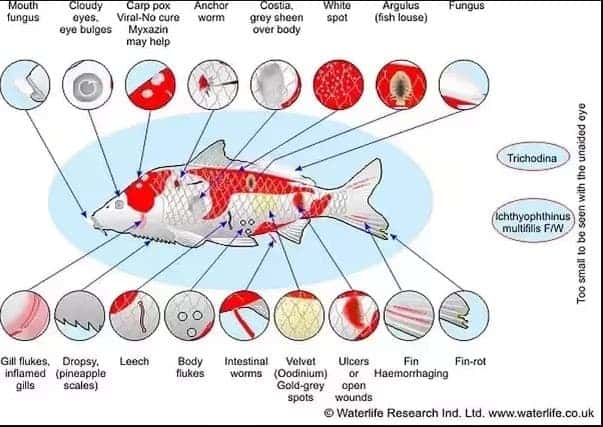
Argulus Parasite
Fish [ice (Argutus laponicus) are saucer-shaped parasites about 1cm (0.4 in) in diameter when adult. The young are
miniature versions of the adults.
All stages of fish lice will feed on koi. puncturing the skin to suck blood and juices’ using a mouth that closely resembles a hypodermic needle, Unfortunately, this invasive method of feeding also means that fish Lice can readily transmit bacteria and viral infections.
When the fish louse bites a koi, it atso injects a substance that s an attractant to other lice, which feed at the same site.
Over a period of time, this results in open lesions and ulcers
Prevention
The only way of introducing fish lice to the koi pond is with an infected fish. Many years ago. it was quite common for imported koi to be infected with fish lice, but these days it is an extremely rare occurence, as most countries of origin have eradicated this parasite from the farms. Wild fish are frequently infected with native species of fish lice, so it is common sense not to introduce them into a koi pond.
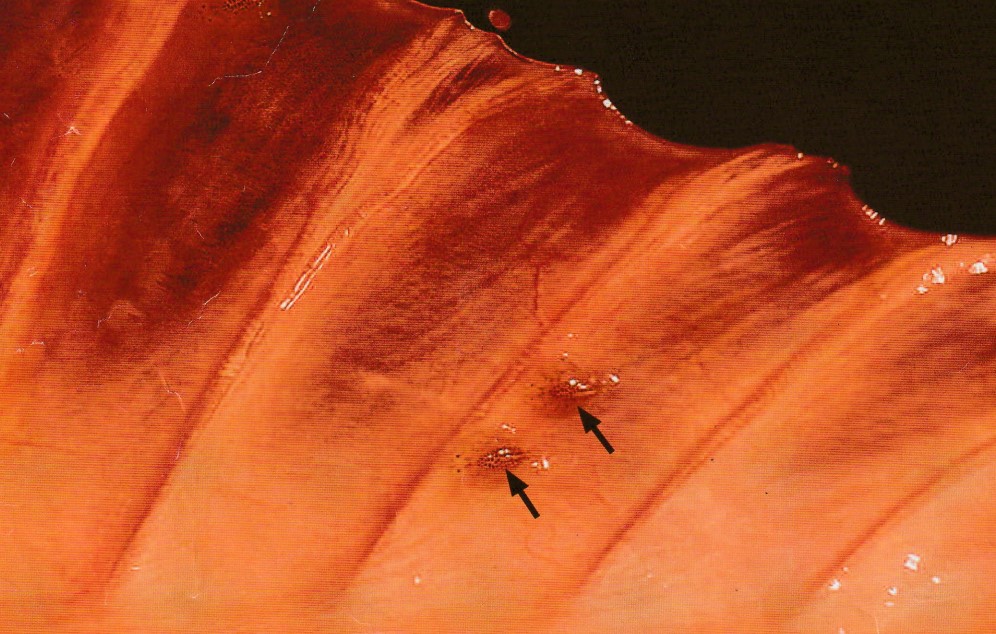
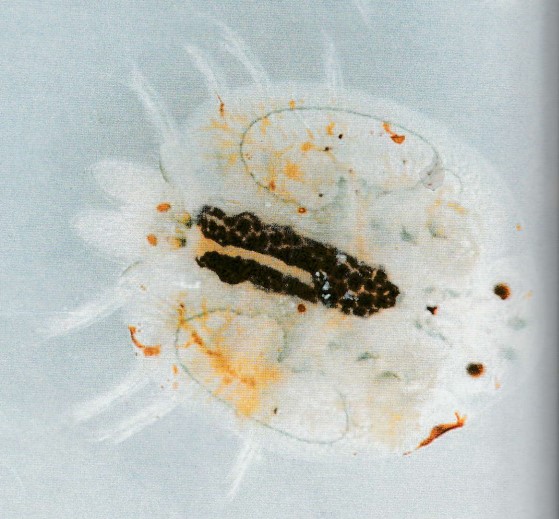
Argulus treatment
If you spot a koi in your pond with fish lice, the chances are that a number of your koi will also be affected. Check all the koi for adult lice and remove any specimens you find with a pair of sterilized tweezers. Once removed, spray the area with methylene blue or betadine to prevent secondary infection.
dimilin for koi treatment is a very effective treatment for fish lice I normally treat at a dose rate of one gram of Dimilin per 264 gallons of pond/tank water for four days for Koi & Goldfish. It will destroy all stages of these nasty bugs in four days! This is a 1PPM dose rate. After 4 days do a 25%-50% water change when complete.
Female fish lice prefer to lay their eggs on pieces of vegetation and debris. lt can help to reduce the number of
fish lice in the pond by tying pieces of plant or even twigs into bundles and the femates will lay their eggs onto them.
Every week or so, remove and destroy the twig bundles, thus gradually reducing the number of fish tice hatching. At
temperatures of 16’C (61.F), it takes approximately 6 weeks for fish lice to hatch, so the rate at which the bundles of.
plants or twigs are removed depending on water temperature.
argulus foliaceus life cycle
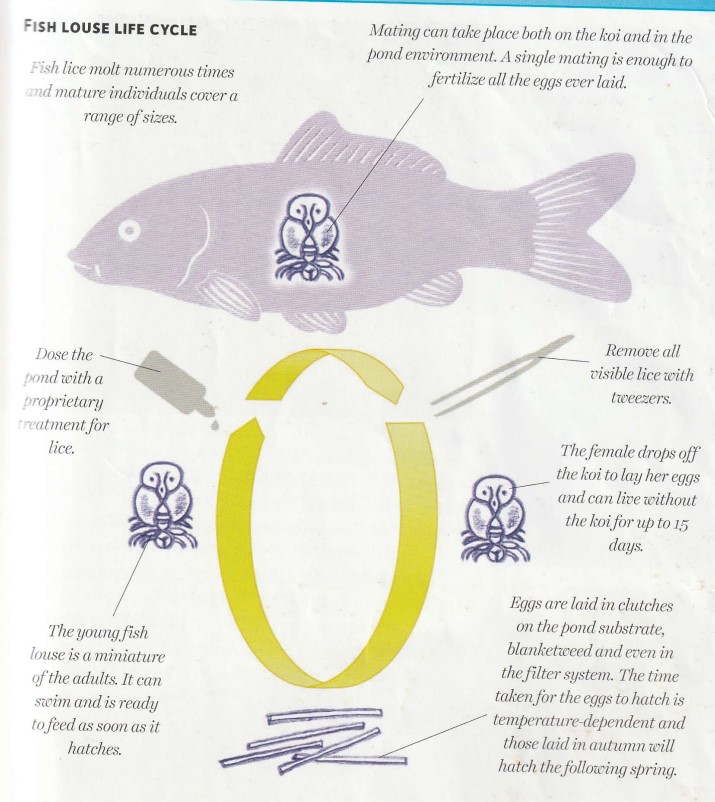
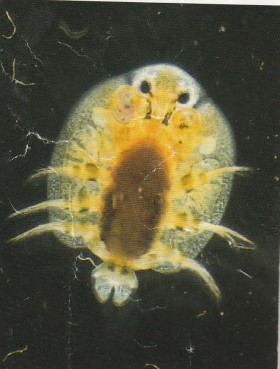
fish diseases pictures
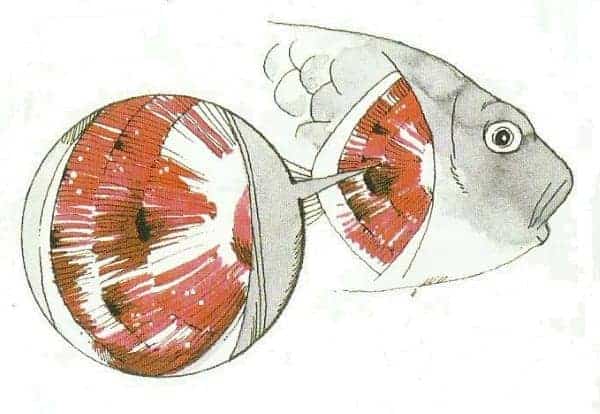
Gill rot fish diseases pictures
This disease occurs the most of all the koi diseases.
Irrespective of conditions of breeding or sizes of koi, it occurs.
It often does at high temperature above 20 degrees centigrade, but sometimes below the temperature, too
The disease advances . before the diseased koi fish loses its weight, it dies, that is before the fish shows any symptom, it dies.
In such a case if you open the gill, you will find red gill filaments turn grey or muddy, or some of them broken.
The germ is columnaris. Its treatment is oral administration of sulfa drugs or antibiotic substances or a medicated bath of furan drugs.
Aquatic terramycin is very useful
fish diseases pictures Anchor worm disease
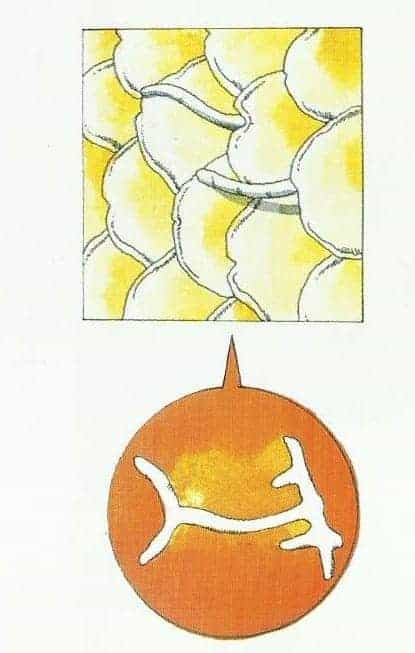
Red swellings appear under the scales.
When the tip of a swelling pulled, a worm with an anchor-shaped top comes out.
The worms stick to fins, mouths and the hypoderm.
Sometimes fifty or sixty worms live on a fish and weaken it to death.
Dipterex is efficacious to exterminate them.
fish diseases pictures raised scales
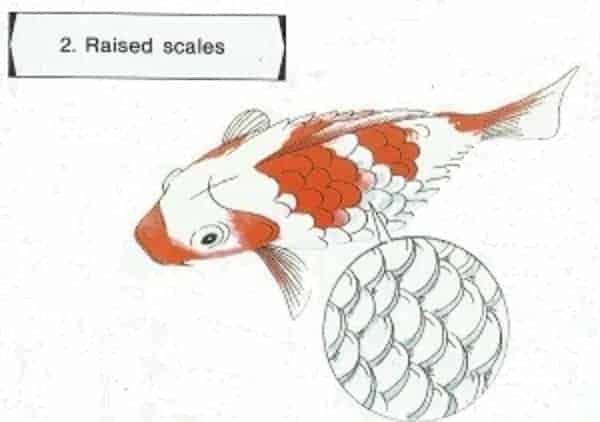
Liquid stays under the scales and puses them up. The scales bristle up. liquid stays also in the abdomen and the body swells. The diseased koi fish looks like a pine cone.
First a part of the body affected, but gradualy the disease spreads all over the body. Eyes of the diseased koi fish protrude.
It breathes hard, swimming around in crazy manner.
After a day or two the fish dies, overtunring on its back.
The Doitsu happens to affected by the disease, but it recovers
Its causes supposed to be some bacteria, interruption in blood circulation caused by a disease blood vessel or internal orga, some medicines and excessive eating of live foods.
It occurs often in the spring when oxidized pupae given to koi.
When the water temperature is high, it breaks out. Any fish, either fry or adult, affected in dirty water.
Sulfa drugs, anitbiotics and furan drugs are efficacious. It is also helpful to break blisters and apply monafracin with Dipterex to the part.
It is important to find the disease in its early stage, otherwise, it will be difficult to cure it.
White spot disease ich on koi

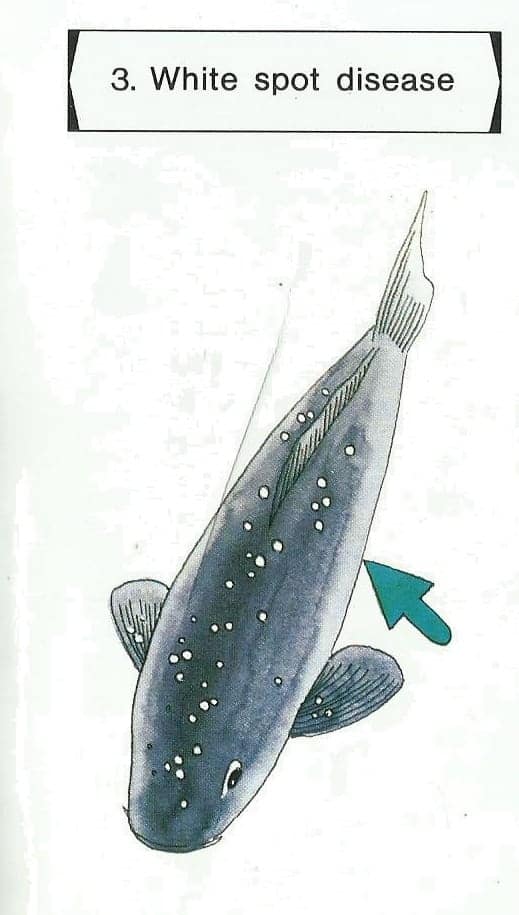
The Koi most likely has a disease called White Spot, which looks like fine white spots on the body, fins and tail of the fish (like grains of salt).
1 Small white spots resembling sand
2 Fish scratch against rocks and gravel
3In advanced stages fish become lethargic
4 Redness or bloody streaks in advanced stages
Life cycle of ICH
Ichthyophthirius multifiliis is a protozoan parasite that usually is transmitted into a pond by a carrier fish, other animals, or man.
It can be pumped into a pond from a river or stream used as a water source for the pond.
When the Ich adult leaves the infected fish, it is called a tomont (see photo above).
The tomont attaches to the pond bottom or other surface and forms a thin-walled cyst. Within the cyst, the tomont divides many times, forming as many as 2,000 small tomites.
When the tomites are released from the cyst into the water, they elongate and become theronts.
These theronts (also called swarmers) swim to a fish host and penetrate the fish’s epithelium using a penetrating gland and the strong swimming action of their cilia.
If they do not find a fish host within a day or two they usually die. This makes Ich an obligate parasite; it must have a fish host to survive.
Once they penetrate the fish they are referred to as trophonts. Trophonts feed on the host fish and mature while being protected from chemical treatment under the fish’s mucus or epithelium.
Only the theront and tomont stages are sensitive to treatments in the water. The amount of time needed for Ich to complete its life cycle is temperature dependent.
Ich commonly infects fish between 68o and 77o F (20o to 25o C), but infections do occur at colder temperatures (as low as 33o F, 1o C).
Typically, Ich cannot reproduce properly at water temperatures above 85o F (30o C), so the parasite usually does not cause problems in warm summer months.
However, in a case in central Florida, Ich was responsible for killing fish at 92o F (33o C).
To complete its life cycle, Ich requires from less than 4 days (at temperatures higher than 75o F or 24o C) to more than 5 weeks (at temperatures lower than 45o F or 7o C).
Researchers have discovered that the Ich parasite can multiply directly by dividing underneath the fish’s top skin layer, bypassing the usual three-stage life cycle.
When this occurs, one can see multiple Ich cells of similar size lined up or in clumps underneath the thin layer of host cells .
Ich is not treatable when it becomes established to this degree and reproduces in this manner, because it does not need to leave the host where it would ordinarily be vulnerable to treatment.
Treatment
1 Raise water temperature
2 Medicate for 10-14 days
3 Reduce medication when treating scaleless fish
4 Discontinue carbon filtration during treatment
5 Perform water changes between treatments
6 The entire cycle takes about two weeks from start to finish. Higher temperatures will shorten the cycle, while low temperatures lengthen it. Therefore, raising the water temperature shortens the time it takes for the parasite to reach the stage in which it is susceptible to medication.
Treatments must be given for a long enough period to assure that all parasites are gone. Watch carefully for other infections, as secondary infections often occur where the skin has been damaged by the parasite.
Although nothing kills the parasite once it has checked into its fish “hotel”, several chemicals kill ich once it has left the fish. Malachite green, methylene blue, quinine hydrochloride, and mepacrine hydrochloride are all effective and are available under several brand names.
How does Ich kill fish? Scientists are not sure exactly how Ich kills fish, but several observations give clues to what is occurring during Ich infections.
The top layer of the gill cells, the epithelium, reacts to an Ich invasion by thickening, and this results in a restriction of the oxygen flow from the water to the blood in the gills.
The respiratory folds of the gills, the lamellae, also become deformed, reducing the transfer of oxygen.
The shear numbers of Ich organisms covering the gills also causes a mechanical blockage of oxygen transfer.
These conditions combine to stress the fish by hindering respiration. The epithelial layer of the gill may separate and cause loss of electrolytes, nutrients and fluids from the fish, making it difficult for the fish to regulate the water concentration in its body.
Secondary bacteria and fungi also invade the, fish more easily while it is impaired from the Ich infection.
Prevention In spite of strict preventive measures, Ich can still make its way into a fish production system.
Attempts should be made, however, to prevent the entry of wild fish into a fish culture pond. All species of freshwater fish can carry the Ich parasite. The end of the drain pipe on the outside of a pond should be at least 2 feet above the water level in the discharge channel or drain canal. Wild or “trash” fish, such as green sunfish, living in a drain canal are able to swim upstream in water discharging from drain pipes that are close to the water level in the drain canal.
Filters should be used when river water is the source for filling a pond. Although filters such as saran cloth may not keep out parasites, they can prevent infected wild fish from entering the pond.
A logical strategy is to wait at least 3 days before stocking fish when a pond is filled through a filter; this should allow any juvenile Ich cells, which may have accidentally entered the pond, to die in the absence of fish hosts.
A longer time would be needed if water temperatures were lower than 50o F.
A copper sulfate treatment could also be applied to the newly filled pond to kill any tomonts or theronts that happen to be in the water. Be cautious when introducing a new batch of fish into a pond.
Examine them closely for any signs of disease (submitting a sample for examination by a qualified fish health professional is recommended).
If possible, quarantine the new fish for a week or more of close observation before mixing them with fish already in a pond.
Equipment used in an infected pond should not be used in a healthy pond unless it is first disinfected or dried in the sun.
If a pond has a history of Ich infections or is very close to waters with wild fish, treat the pond as a preventive measure.
Three to four applications of a treatment (discussed in the next section) can be applied at 7- to 10- day intervals just prior to the time of year when Ich commonly occurs in that particular pond. Additionally, maintaining well nourished fish helps significantly in preventing Ich.
It is not unusual for emaciated, starved fish to become infected with Ich. Treatment
Because not all stages in the life cycle of Ich are affected by treatments, multiple treatments must be administered to catch individual Ich organisms in the vulnerable stages of their life cycle.
For example, during the first day when a chemical is added to the water to kill Ich, only a certain percentage of Ich organisms will be susceptible to the chemical.
Two days later many of the surviving Ich organisms, which were embedded in the skin, will be entering the vulnerable stage of their life cycle; chemical treatment on this day will kill these susceptible organisms.
In order to catch all the Ich organisms in a “treatable” stage, from three to seven treatments might be needed.
(Table 1) depending on water temperature. Treatment effectiveness should be evaluated by a fish health professional after the third treatment to decide whether to continue with the treatment schedule. Mortality rates should be observed, and samples of fish from the infected pond should be examined for Ich under a microscope. The spacing of treatments varies with temperature. Table 1 can serve as a guide for an effective treatment. Some fish health professionals
believe treatments should be applied every day, even in cooler weather, instead of skipping days in between.
Ich appears to have a distinct temperature range in which it is infectious (see Life Cycle of Ich). It has been observed that temperature changes of 15o F or more above or below the temperature at which an Ich case is detected will end the disease episode regardless of the number of treatments made In some cases, one or two treatments may be all that is necessary to “buy time” for the fish until such a temperature change occurs. The U. S. Food and Drug Administration has approved the use of formalin (Formalin-Fª) to control Ich on trout, salmon, catfish, largemouth bass and bluegill. At the time of this writing, FDA has also given copper sulfate (CuSO4) and potassium permanganate (KMnO4) deferred status, which means that these treatments may be used without legal prosecution, but they may lose deferred status if evidence is found of any danger to the human consumer. No other chemicals should be used to treat Ich on food fish. Of the three therapeutants, copper sulfate is the least expensive. Treatment rates for various chemicals are described below. Adding extra chemical “for good measure” may kill or stress the fish being treated, while using less than the required therapeutic dose may not be effective in killing the parasites that are causing the fish to die. The person applying the treatment should protect eyes with goggles and skin with gloves and long sleeves. A respirator should be worn.
Formalin is a solution of 37 percent formaldehyde in water with 6 to 15 percent methanol added as a preservative. It should be stored at temperatures above 40o F. Formalin can be used as a bath treatment for up to an hour at 125 to 250 parts per million (ppm) (4.4 to 8.8 milliliters per 10 gallons; 32.8 to 65.5 milliliters per 10 cubic feet). The treatment rate should not exceed 167 ppm on warm water fish when temperatures are higher than 70o F (21o C), or on trout and salmon when temperatures are above 50o F (10o C). Tanks should be flushed with clean, aerated water after an hour, or sooner if fish show signs of stress. Formalin is used as a pond treatment at 15 to 25 ppm. This would be 4.5 to 7.5 gallons of formalin per acre-foot (an acre of water 1 foot deep). At the time of this writing, the cost of formalin was about $5.00 per gallon in large fish production areas, but can be as high as $30.00 per gallon for small quantities. At $5.00 per gallon, the cost of one treatment with 15 ppm formalin would be: 1 acre-foot x 4.5 gallons formalin/acre foot x $5.00/gallon = $22.50 per acre-foot If formalin costs $30.00 per gallon, the cost would rise to $135.00 per acre-foot. And at 25 ppm, the cost would range from $37.50 to $225.00 for each acre-foot treated. Formalin should be applied evenly throughout the pond. Formalin should be handled very carefully because its fumes are dangerous and can damage the mucosal lining of the nose and throat. learn more at https://www.koisale.com/ich.html
Here is another good article resource about how to treat ich https://thewittyfish.com/ichthyophthirius-multifiliis/
Ich & White Spot Disease – Cause, Prevention, And Cures
A Koi’s health depends on the environment provided by you, the koi pond owner. Koi fish have a high resistance generally, but the stressful conditions can break down the immune system, as in humans. A stressed koi fish becomes sick. Prevention is much more easier than treating your koi fish.
Some causes of stress are: high ammonia level in the water, low dissolved oxygen level in the koi pond, not proper handling of koi fish , moving koi fish, poor water quality, too much koi in the pond, parasites, too high or low water temperature, toxic chemicals, sharp edges in and around pond and not proper nutrition.
Disease can be: bacterial, viral, fungal and can caused by parasites also.
Bacterial koi disease can be: Flexibacter Columnaris (fin and tail rot), Aeromonas (hole-in-the-side), Pseudomonas or Vibrio.
One of the principal causes of fish mortality is bacterial disease. Treatment: acriflavin, nitrofurans, oxytetracycline, kanamycin, chloramphenicol, sulfanomides, salt, and so on.
Viral koi diseases can be: unfortunately there is no effective treatment except to remove growths by scraping.
Fungal koi diseases may occur as a secondary infection near some other fish injury. Affects damaged or disturbed fish eggs. Some known treatment: acriflavin, iodine, malachite green, methylene blue, salt or formalin as a bath.
Parasitic koi diseases can be the followings: Lernaea (anchor worm), Argulus (fish lice), Monogenetic Flukes, Ich, Trichophyra or internal parasites.
Most fish carry some parasites. Stress situations or seasonal climatic variations may bring on infection.
Treatment: Dylox, Masoten, Demilin, Formalin, Malachite Green, potassium permanganate or salt in the whole koi pond or in a bath.
We can use some chemical treatments as external swabbing, injection, feed or bath in disinfectants 30 to 60 minutes.
External swabbing with antibiotics and/or disinfectants can be very effective.
Partial water changes are very effective also in improving water quality and decreasing stress. You need to use it wisely.
-
what are common diseases of koi fish
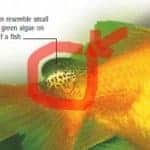
Occasionally, goldfish and koi disease occurs in ponds as fish fall prey to parasitic, bacterial or fungal attacks. The causes of fish diseases are varied
-
pond koi what diseases are they susceptible to
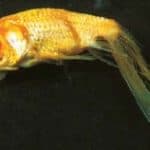
They are a problem only when the fish are weakened by poor water to avoid introducing diseases and parasites into the pond in the fish, making them vulnerable to bacterial infections.
-
how to treat koi diseases
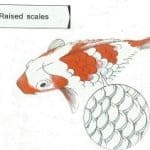
The affected areas take on a white/grey hue and the Koi’s fins may redden. If the parasites afflict the gills the fish may be seen gasping at the surface of the water. Costia can be treated by adding Malachite Green and Formalin to the pond but you must ensure that there is no salt in the water prior to treatment.
-
How do you treat Koi disease?
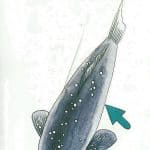
Ich is usually the result of poor water quality and so you will have to address both the disease and its causes. To treat Ich you should first increase the salt concentration of your pond to roughly 0.5% over a period of a few days. The water temperature should be increased to 80°F and aeration should be improved.
-
How do you know if your Koi has parasites?
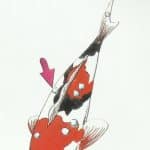
Infestations of this parasite can appear very rapidly indeed, and Koi suffering infestations exhibit the classic symptoms of lethargy, clamped fins, rubbing and flashing and the skin can take on a grey white opaqueness.
-
How do you treat koi mouth rot?
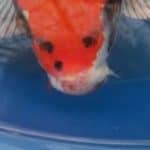
Mouth Rot. This condition causes sores in the mouth and is often caused by poor water quality. You should address the cause by improving the environment in the pond. The sores can be treated with hydrogen peroxide or iodine. photo source: koiphen.com
-
How do I know if my koi is stressed?
Examine all fins, especially those underneath the fish, for ragged or uneven edges, tears, splits or bloodshot appearance. Red lines in the Koi fins are a sure sign that your Koi is under stress. Specific examples of things which can cause stress (stressors) are listed below.
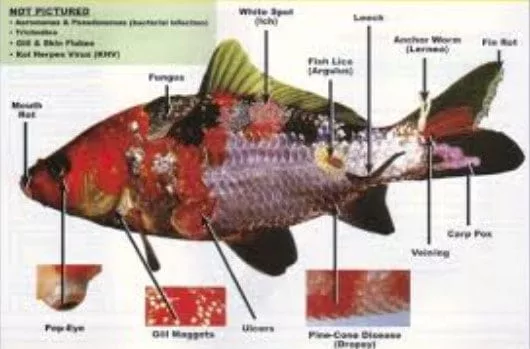
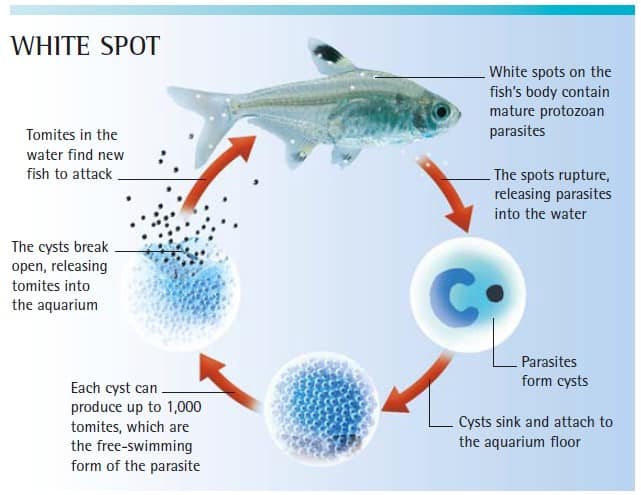
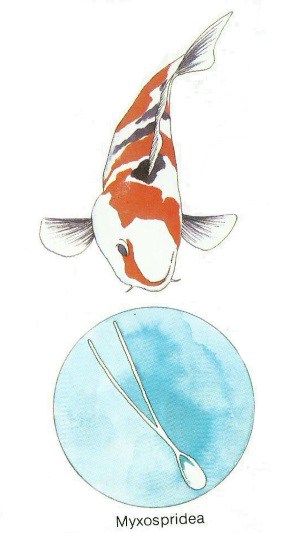
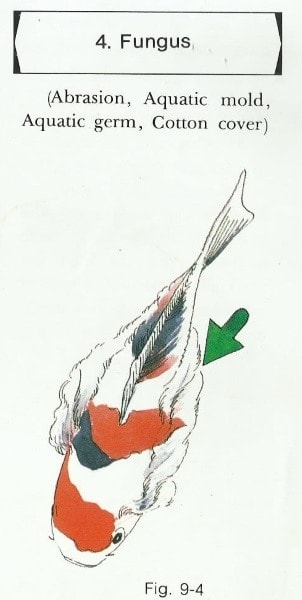
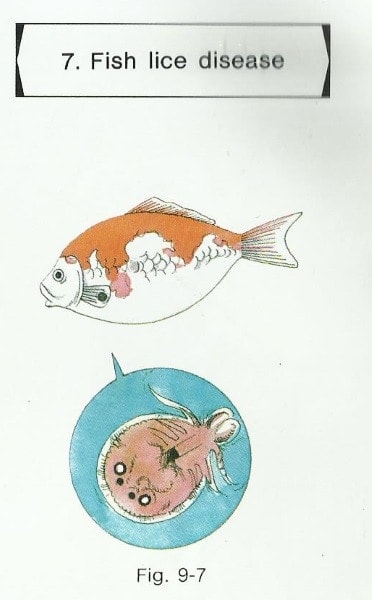
Hello,
Greeting from Vietnam.
Currently, I am rearing couple of KOI fishes, however, I got a problem with them after breeding.
Do you have any social account that I can quickly contact to ask for your help?
Thank you
Hello, what is the problem you encounter, yes, you can subscribe to my youtube channel Giobel Koi Center and leave comment on one of my videos so I can respond to it.